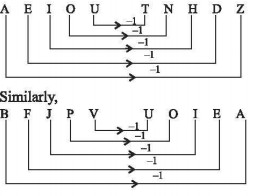UGC NET Paper1 Previous Year Solved Papers - 4th December 2019 Morning Shift
- Option : A
- Explanation : In Viruddha hetvabhasa or contradictory fallacious reason, the middle term abides in the minor term as well as in its opposite. It is a reason uniformly concomitant with a contrary inference as well, which means, it proves the contrary of what it is intended to prove. e.g. In "Air is heavy because it is empty", the middle term 'empty' actually disproves the heaviness of air. Similarly, in 'Sound is element, because it is caused', the middle term, 'caused' actually disproves that sound is element because element is a naturally occurring thing rather than 'caused'.
- Option : D
- Explanation : Savyabhicara literally means 'irregular middle' .
According to the Nyaya system of religious
philosophy, savyabhicara hetvabhasa occurs
when a syllogism has an irregular middle
term, which makes the inference incorrect, as
illustrated below:
• All cars are trucks.
• Buses are cars.
• Hence, buses are trucks.
Since the middle term 'cars' is not uniformly related to the major term 'trucks', the conclusion is inferred to be incorrect.
9. Information overload in a classroom environment by a teacher will lead to
- Option : D
- Explanation : Information overload leads to delayed comprehension in the learner which in turn, leads to delayed feedback. When grasp / comprehension of the topic taught is slow, semantic (of meaning) precision or effective impression are not possible; and participation, too, is low and hesitant.
10. Which of the learning outcomes are intended in teaching organized at understanding level?
- Option : B
- Explanation : Teaching can be organized at three levels:
memory, understanding, reflective.
Options (a) and (d) indicate the memory level, option (b) understanding level and option (c) reflective level. At memory level, rote learning or longer recall and retention of facts is done with least thinking involved.



